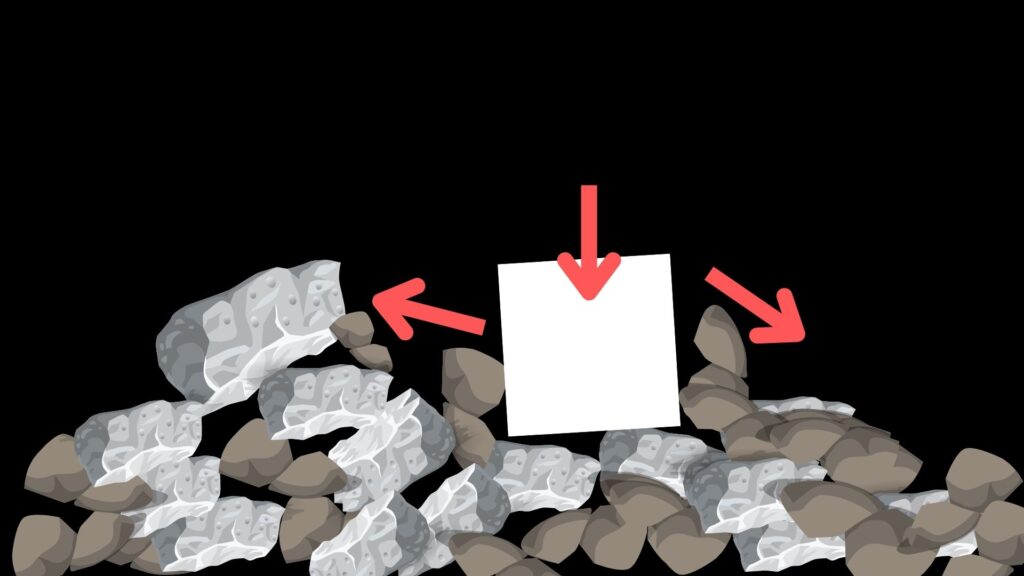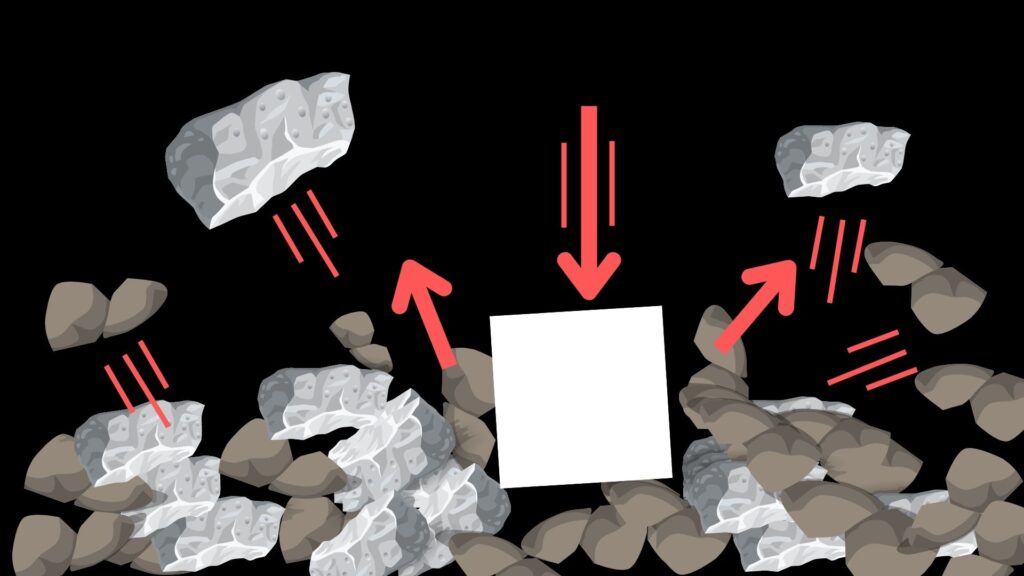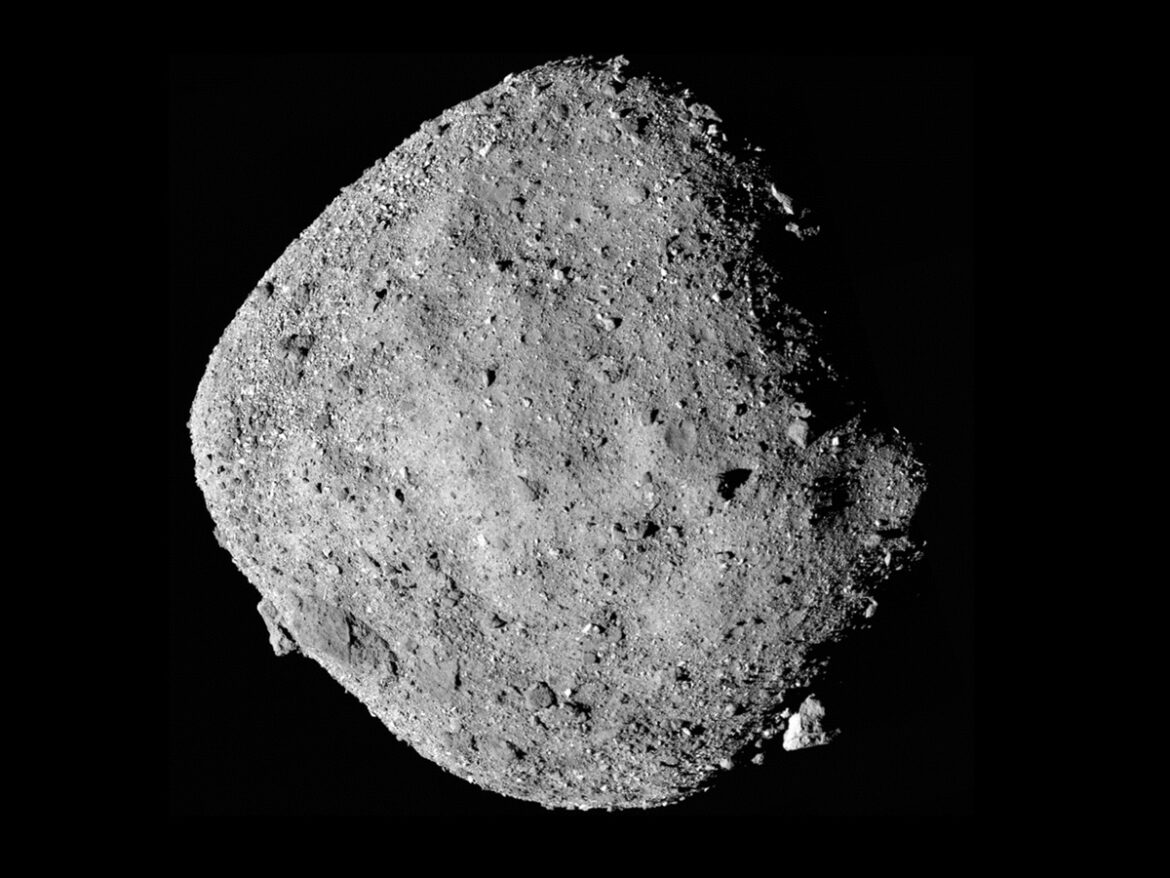You may think that asteroids are just large rocks, but do you know that it may not be the case? Today, we’ll talk about rubble-pile asteroids, weird but common. Let’s find out.
What is a Rubble-Pile Asteroid?
You would probably imagine an asteroid to be a solid body, extremely resistant to surface perturbations. But this couldn’t be further from the truth for most but the largest asteroids. Most of the smaller asteroids are rubble-pile asteroids, which are very loose collections of rocks, somehow floating in space in one piece.

In fact, scientists learned the hard way in the OSIRIS-REx mission, which collected a sample on asteroid Bennu on October 20, 2022. Before the mission, it’s already known that the surface is loose, but there should still be a bit of cohesion sticking the material together. However, during sampling, the rocks reacted erratically and dramatically. It even left a crater 8 meters wide, much larger than expected. But why?
That’s because the surface doesn’t have cohesion at all! During OSIRIS-REx’s sampling, it sank into the asteroid, experiencing very little resistance as the small rocks slid past each other like particles in a fluid. In reality, had it not fired its thrusters, the space probe would have been submerged inside the rocks, possibly never coming back. Thus, scientists concluded that their mutual gravity is all that holds the rocks together. Though the acceleration is negligible to Earth standards, more than 100,000 times weaker than that of our planet, it is the dominant force acting on the asteroid and keeps it intact.

What’s more, rubble-pile asteroids rotate slowly, having a rotation period of more than 2.2 hours. If it spins faster, gravity alone cannot hold the rocks together, and the asteroid disintegrates.
How Do These Asteroids Obtain This Structure?
How can an asteroid get such a strange property? Well, it could. be down to impacts. Think of the formation of the Moon as an example. It is hypothesized that Earth collided with a Mars-sized planet in the early Solar System. That collision brought a lot of debris flying out into space, but they started accreting due to their mutual gravity and Earth’s gravity. Eventually, it formed the Moon. Although the Moon is not a rubble-pile because it’s large, formations of such loose asteroids may follow a similar process.

Likewise, when asteroids hit at just the right speed, they disrupt their surfaces, but the debris they eject are not fast enough to prevent accretion, and not slow enough to get captured by the parent asteroid. This allows the debris to clump together into one or more rubble-pile asteroids. Since these impacts are physical, they generally don’t cause changes to the asteroid’s composition. Therefore, these asteroids are good samples to the asteroids of our Solar System in general, and are made of different materials.
Thus, you can infer that learning about the distribution and composition of these asteroids may help figure out the impact frequencies in the Solar System, vastly improving our understanding of how our planetary system formed.
What Happens When You Try to Crash into it?
These asteroids are just like ball pits, as mentioned. Landing on a ball pit is a smooth experience. The balls lengthen your deceleration time, subjecting you to less g-force and absorbing the impact. In contrast, landing on a hard surface is not a pleasant experience. Nothing is slowing your fall until you hit the surface and stop. But that’s a problem. Most near-Earth asteroids are rubble-piles. So if you send a craft slamming into it to deflect it from Earth, will it absorb the impact and make minimal effect?
On the contrary, the loose nature of the asteroid can make the deflection even more effective. When the DART space probe hit the asteroid Dimorphos on September 26, 2022, it changed its orbital period around Didymos by 32 minutes. This was much better than the prediction of 10 minutes. Why did the orbit change so much? The asteroid’s surface is so loose that the spacecraft kicked off lots of debris at its high-speed impact. These small pieces push the asteroid forward by exerting an equal and opposite force as they blast backward. In fact, if this asteroid were just one solid rock, fewer debris would have been flown out, and the impact would not be so successful.

Conclusion
In this article, we have described what a rubble-pile asteroid is, what they are made of, and how they formed. Even though the structure has undergone lots of changes since the early Solar System, they ultimately hold clues to the formation of our Solar System, both by their surface materials and by their distribution across our planetary neighborhood. If you would like more information on these weird but common asteroids, please visit the webpages in the references below.
References
- Plait, P. (2019, May 19). What astronomers mean by ‘rubble pile asteroids’. Retrieved November 6, 2022, from https://www.syfy.com/syfy-wire/what-astronomers-mean-by-rubble-pile-asteroids
- (n.d.). Evidence for Rubble Pile Asteroids. Retrieved November 6, 2022, from https://www.boulder.swri.edu/~bottke/rubble/node2.html
- (n.d.). About Lightcurves. Retrieved November 6, 2022, from https://alcdef.org/php/alcdef_aboutLightcurves.html
- NASA Goddard. (2022, July 8). Asteroid Bennu’s Surprising Surface Revealed by NASA Spacecraft. Retrieved November 6, 2022, from https://www.youtube.com/watch?v=42EwbQ3afPA
- Surowiec, J. (2021, March 2). NASA’s First Planetary Defense Test Mission. Retrieved November 6, 2022, from https://dart.jhuapl.edu/News-and-Resources/article.php?id=20210302
- Surowiec, J., Handal, J. (2022, October 11). NASA Confirms DART Mission Impact Changed Asteroid’s Motion in Space. Retrieved November 6, 2022, from https://dart.jhuapl.edu/News-and-Resources/article.php?id=20221011
- Talbert, T. (2020, July 23). Predicting the Unpredictable—The Dynamics of DART’s Dive into an Asteroid. Retrieved November 6, 2022, from https://www.nasa.gov/feature/predicting-the-unpredictable-the-dynamics-of-dart-s-dive-into-an-asteroid

